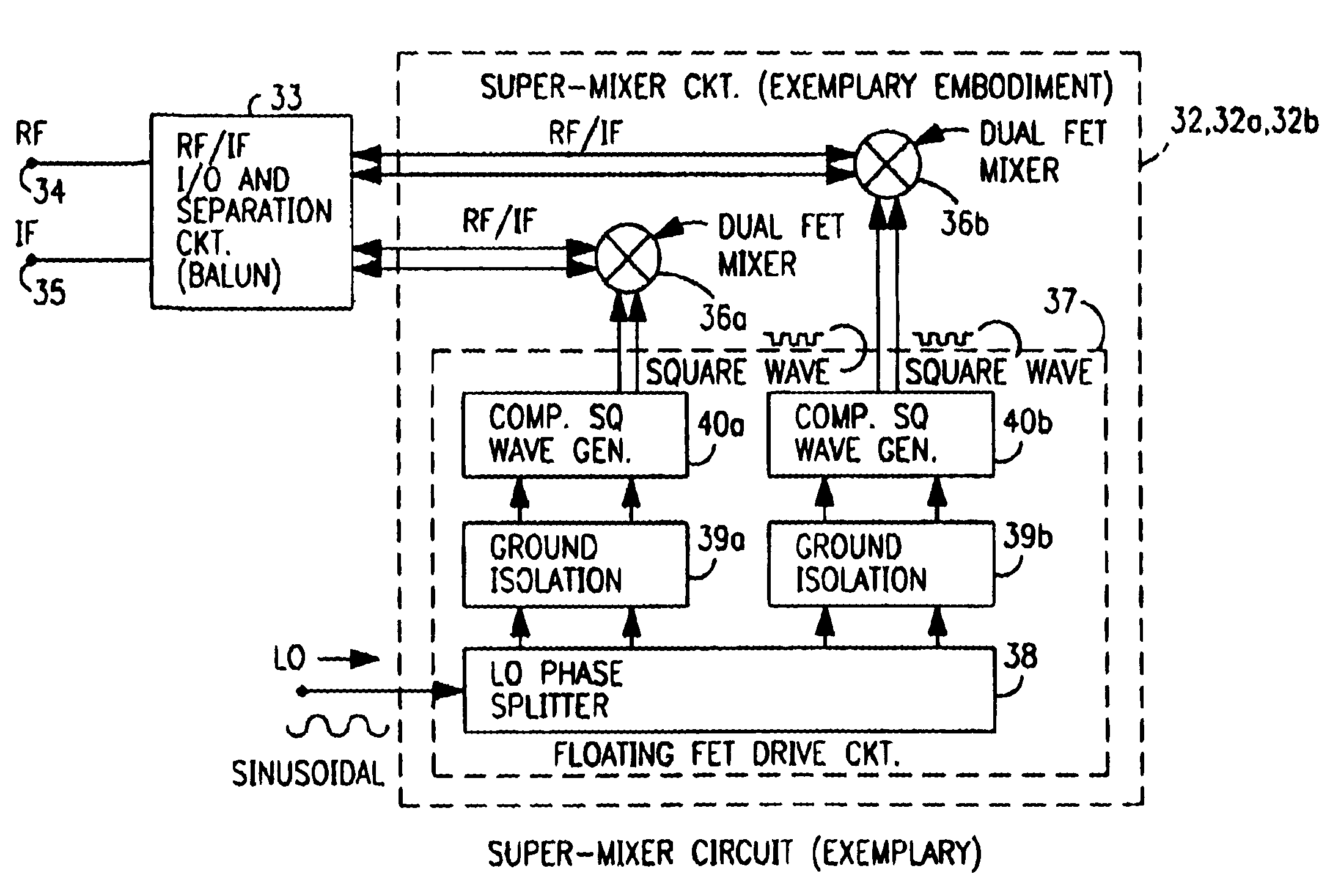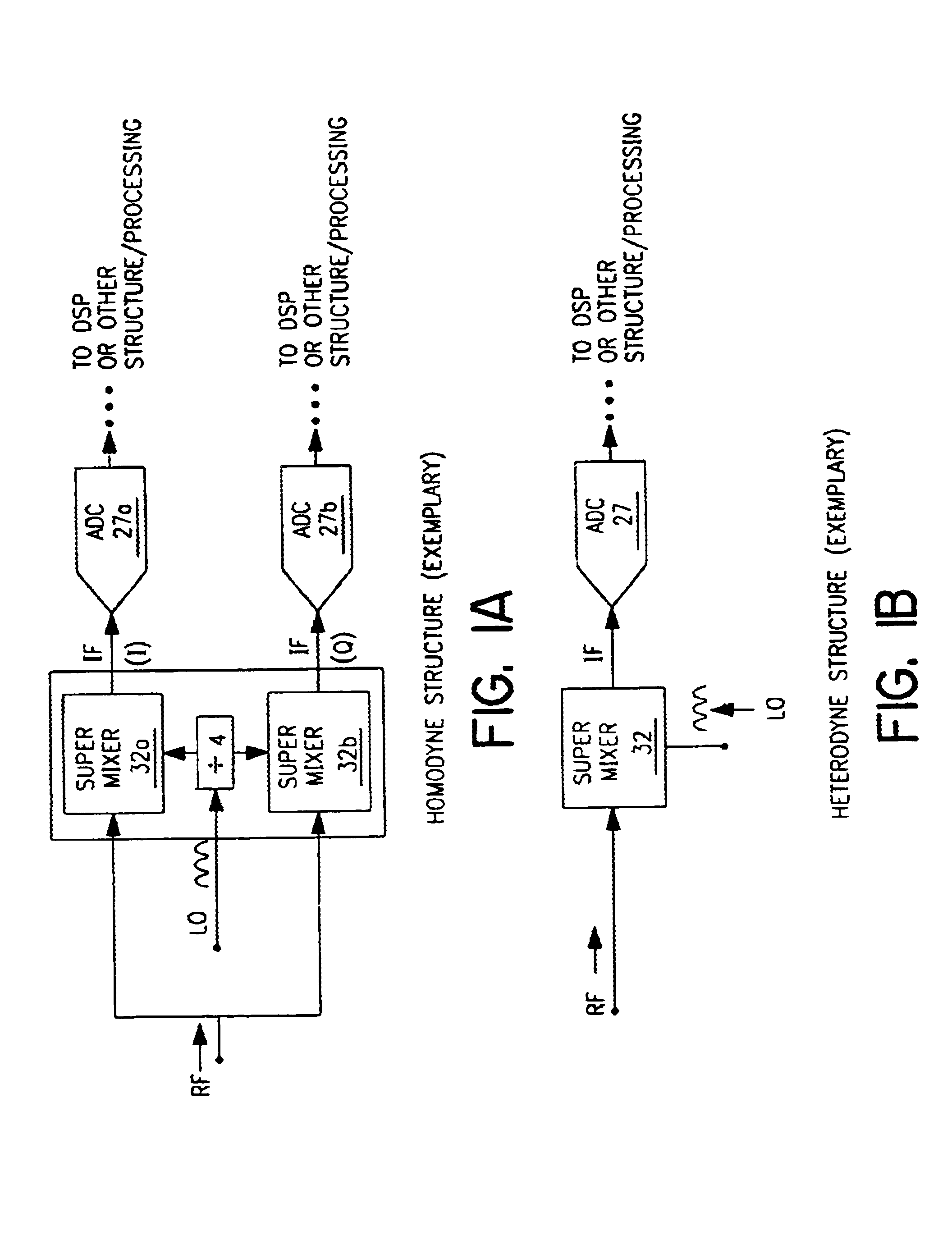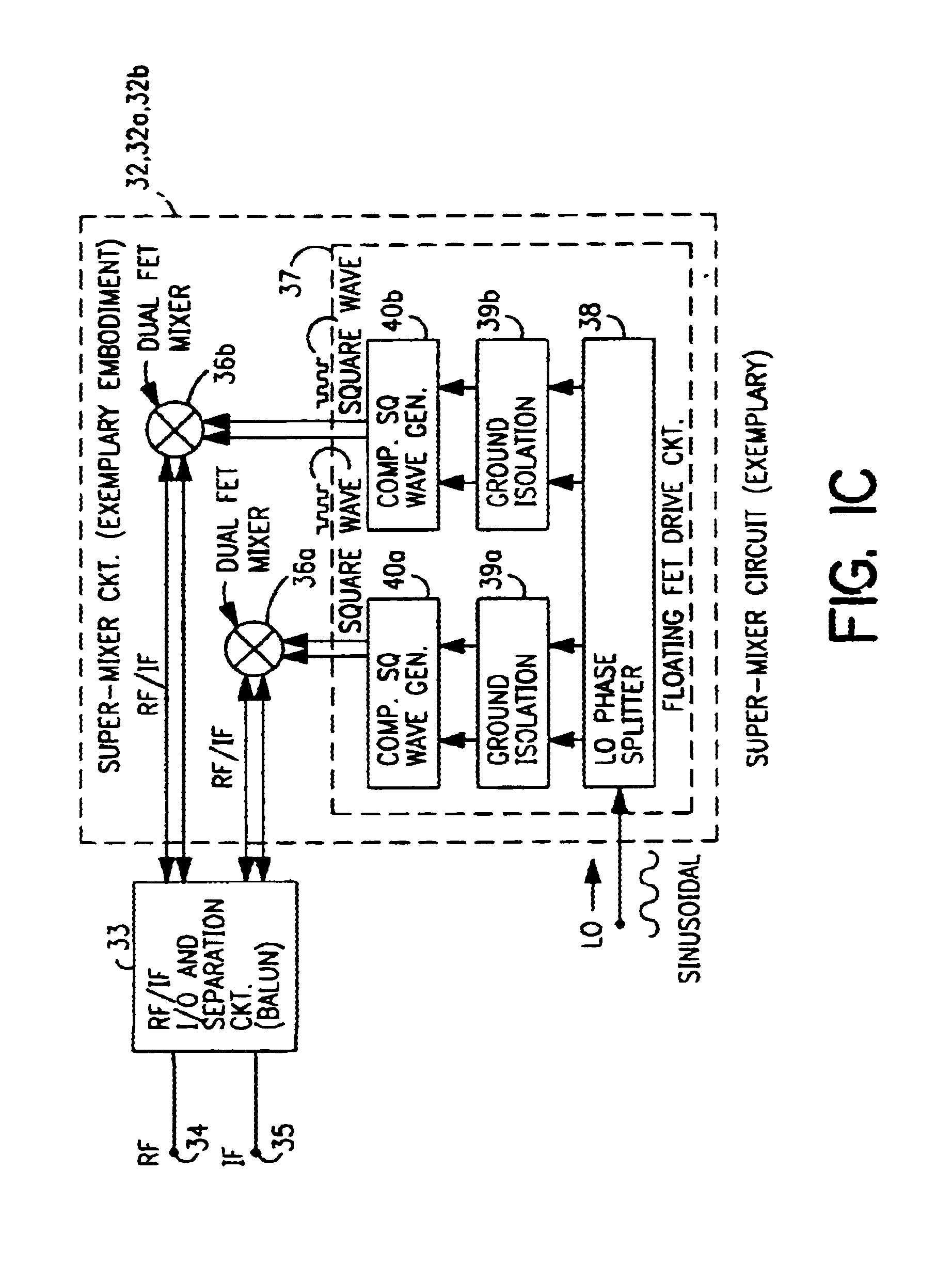Radio system including mixer device and switching circuit and method having switching signal feedback control for enhanced dynamic range and performance
a technology of switching circuit and mixer device, which is applied in the direction of oscillator generator, electrical apparatus, transmission, etc., can solve the problems of unacceptably high distortion of some applications, poor dynamic range of conventional homodyne systems, and other undesirable characteristics, and achieve the effect of enhancing the dynamic range and performan
- Summary
- Abstract
- Description
- Claims
- Application Information
AI Technical Summary
Benefits of technology
Problems solved by technology
Method used
Image
Examples
Embodiment Construction
Reference will now be made in detail to the present embodiments of the invention, which are illustrated in the accompanying figures. We now turn to the drawings, wherein like components are designated by like reference numbers throughout the various figures.
With reference to FIG. 1 there is shown an overview of several aspects and embodiments of the inventive structure and corresponding inventive method. With specific reference to FIG. 1a, an exemplary down-frequency conversion embodiment of a homodyne structure, such as may be used in a radio system is shown in which each of two of the inventive mixer devices 32a, 32b (also referred to as "super-mixer" devices) receive an RF signal, and super-mixer control (switching) signals at a control (switching) port, which control signals are derived from a conventional externally applied sinusoidal LO signal but which have special properties described in greater detail hereinafter. The in-phase (I) channel and quadrature-phase (Q) channel si...
PUM
 Login to View More
Login to View More Abstract
Description
Claims
Application Information
 Login to View More
Login to View More - R&D
- Intellectual Property
- Life Sciences
- Materials
- Tech Scout
- Unparalleled Data Quality
- Higher Quality Content
- 60% Fewer Hallucinations
Browse by: Latest US Patents, China's latest patents, Technical Efficacy Thesaurus, Application Domain, Technology Topic, Popular Technical Reports.
© 2025 PatSnap. All rights reserved.Legal|Privacy policy|Modern Slavery Act Transparency Statement|Sitemap|About US| Contact US: help@patsnap.com



